For the V sign of dermatomyositis, see
Shawl sign.
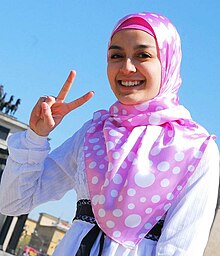
A Malaysian woman showing the V sign
The V sign is a hand gesture in which the index and middle fingers are raised and parted to make a V shape while the other fingers are clenched. It has various meanings, depending on the circumstances and how it is presented.
When displayed with the palm inward toward the signer, it has long been an offensive gesture in some Commonwealth nations. In the 1940s, during the Second World War, a campaign by the Western Allies to use the sign with the back of the hand toward the signer (U+270C ✌ VICTORY HAND in Unicode) as a “V for Victory” sign proved quite effective.[1] During the Vietnam War, in the 1960s, the “V sign” was widely adopted by the counterculture as a symbol of peace. Shortly thereafter, it also became adopted as a gesture used in photographs, especially in Japan.
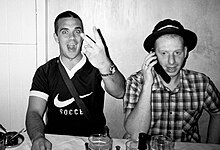
Singer Robbie Williams using a V sign with palm facing himself as an insult to the observer
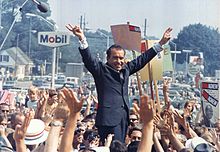
US president Richard Nixon using the gesture as a victory sign (1968)

American actor Steve McQueenflashing the V sign (for peace) for a mugshot, after being arrested for drunk driving (1972)
The meaning of the V sign is partially dependent on the manner in which the hand is positioned:
- If the palm of the hand faces the signer (i.e., the back of the hand faces the observer), the sign can mean:
- With the back of the hand facing the signer (palm of the hand facing the observer), it can mean:
- The number ‘2’.
- Victory – in a setting of wartime or competition. It was first popularised in January 1941 by Victor de Laveleye, a Belgian politician in exile, who suggested it as a symbol of unity in a radio speech and the subsequent “V for Victory” campaign by the BBC.[4] It is sometimes made using both hands with upraised arms as United States President Dwight Eisenhower and, in imitation of him, Richard Nixon, used to do.
- Peace, or friend – used around the world by peace and counter-culture groups; popularized in the American peace movement of the 1960s. The commonality with the symbol’s use from the 1940s was its meaning the “end of war”.[5]
- V (the letter) – used when spelling in American Sign Language.[6]
- When used with movement, it can mean:
- Air quotes – flexing fingers, palm out, both hands.[7]
- This hand shape is also used in a number of signs in many sign languages, including (in American Sign Language) “to look” (with the palm down) or “to see” (palm up). When the pointer and middle fingers are pointed at the signer’s eyes then turned and the pointer finger is pointed at someone it means “I am watching you.”[8]
- The ordinal “second” in American Sign Language has the V-sign palm forward, then the hand turns (yaws) until the palm faces backward.[9]
As an insult[edit]

The use of the V sign (“the forks”) as an insulting gesture, including the use of the upward swing at the elbow.
The insulting version of the gesture (with the palm inward U+1F594 REVERSED VICTORY HAND)[10] is often compared to the offensive gesture known as “the finger“. The “two-fingered salute” (also “the forks” in Australia[11]) is commonly performed by flicking the V upwards from wrist or elbow. The V sign, when the palm is facing toward the person giving the sign, has long been an insulting gesture in England,[12] and later in the rest of the United Kingdom, Ireland, Australia, South Africa, India, Pakistan and New Zealand.[2] It is frequently used to signify defiance (especially to authority), contempt, or derision.[13]
As an example of the V sign (palm inward) as an insult, on November 1, 1990, The Sun, a British tabloid, ran an article on its front page with the headline “Up Yours, Delors” next to a large hand making a V sign protruding from a Union Jack cuff. The Sun urged its readers to stick two fingers up at then President of the European Commission, Jacques Delors, who had advocated an EU central government. The article attracted a number of complaints about its alleged racism, but the now defunct Press Council rejected the complaints after the editor of The Sun stated that the paper reserved the right to use vulgar abuse in the interests of Britain.[14][15]
On April 3, 2009, Scottish association football players Barry Ferguson and Allan McGregor were permanently banned from the Scottish national squad for showing the V sign while sitting on the bench during the game against Iceland. Both players were in their hotel bar drinking alcohol after the Scottish defeat to The Netherlands until around 11 am the next morning, meaning that both of the players breached the SFA discipline code before the incident as well, but the attitude shown by the V sign was considered to be so rude that the SFA decided never to include these players in the national line-up again.[16][17] Ferguson also lost the captaincy of Rangers as a result of the controversy.[18] McGregor’s ban was lifted by then SFA manager Craig Levein and he returned to Scotland national squad in 2010.[19][20]
Steve McQueen gives the sign in the closing scene of the 1971 motorsport movie, Le Mans. A still picture of the gesture[21] was recorded by photographer Nigel Snowdon and has become an icon of both McQueen and the film itself. The gesture was also flashed by Spike (played by James Marsters) in “Hush“, a Season 4 episode of Buffy the Vampire Slayer. The scene was also featured in the series’ opening credits for all of Season 5. It was censoredby BBC Two only in its early-evening showings of the program.[22][23]
For a time in the UK, “a Harvey (Smith)” became a way of describing the insulting version of the V sign, much as “the word of Cambronne” is used in France, or “the Trudeau salute” is used to describe the one-fingered salute in Canada. This happened because, in 1971, show-jumper Harvey Smith was disqualified for making a televised V sign to the judges after winning the British Show Jumping Derby at Hickstead. His win was reinstated two days later.[24] Harvey Smith pleaded that he was using a Victory sign, a defence also used by other figures in the public eye.[25]
Sometimes foreigners visiting the countries mentioned above use the “two-fingered salute” without knowing it is offensive to the natives, for example when ordering two beers in a noisy pub, or in the case of the United States president George H. W. Bush, who, while touring Australia in 1992, attempted to give a “peace sign” to a group of farmers in Canberra—who were protesting about U.S. farm subsidies—and instead gave the insulting V sign.[26]
Origins[edit]
A commonly repeated legend claims that the two-fingered salute or V sign derives from a gesture made by longbowmen fighting in the English archers at the Battle of Agincourt (1415) during the Hundred Years’ War, but no historical primary sources support this contention.[27] This origin legend states that English archers believed that those who were captured by the French had their index and middle fingers cut off so that they could no longer operate their longbows, and that the V sign was used by uncaptured and victorious archers in a display of defiance against the French.
Alternatively, there is evidence against this interpretation as the chronicler Jean de Wavrin, contemporary of the battle of Agincourt, reports that the captured archers would have three fingers cut, and not two.[28][29] Wielding an English longbow requires three fingers, as is the case for modern bows.[30]
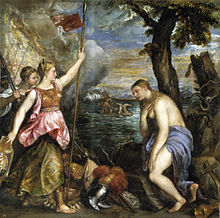
Religion saved by Spain, by Titian
Another early appearance of the sign is in Titian‘s painting Religion saved by Spain commemorating the Battle of Lepanto created between 1572 and 1575. This is an allegoric painting, portraying Spain as a woman in a dramatic landscape, with a shield in her right hand and a spear with the flag of Victory in her left hand. Both her hands show symbolic V (“victoria”) gesture.
The first contemporary evidence of the use of the insulting V sign in the United Kingdom dates to 1901, when a worker outside Parkgate ironworks in Rotherham used the gesture (captured on the film) to indicate that he did not like being filmed.[31][32] Peter Opie interviewed children in the 1950s and observed in The Lore and Language of Schoolchildren that the much-older thumbing of the nose (cocking a snook) had been replaced by the V sign as the most common insulting gesture used in the playground.[31]
Between 1975 and 1977 a group of anthropologists including Desmond Morris studied the history and spread of European gestures and found the rude version of the V-sign to be basically unknown outside the British Isles. In his Gestures: Their Origins and Distribution, published in 1979, Morris discussed various possible origins of this sign but came to no definite conclusion:
because of the strong taboo associated with the gesture (its public use has often been heavily penalised). As a result, there is a tendency to shy away from discussing it in detail. It is “known to be dirty” and is passed on from generation to generation by people who simply accept it as a recognised obscenity without bothering to analyse it… Several of the rival claims are equally appealing. The truth is that we will probably never know…[31]
Victory sign[edit]
Second World War: V for Victory campaign[edit]
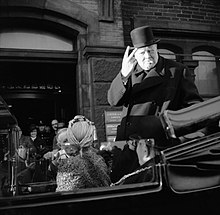
Churchill was initially unaware of the ulterior meaning of holding up his hand like in this gesture (1942).
On 14 January 1941, Victor de Laveleye, former Belgian Minister of Justice and director of the Belgian French-language broadcasts on the BBC (1940–44), suggested in a broadcast that Belgians use a V for victoire (French: “victory”) and victorie / vrijheid (Dutch: “victory / freedom”) as a rallying emblem during the Second World War.
In the BBC broadcast, de Laveleye said that “the occupier, by seeing this sign, always the same, infinitely repeated, [would] understand that he is surrounded, encircled by an immense crowd of citizens eagerly awaiting his first moment of weakness, watching for his first failure.” Within weeks chalked up Vs began appearing on walls throughout Belgium, the Netherlands and Northern France.[33] Buoyed by this success, the BBC started the “V for Victory” campaign, for which they put in charge the assistant news editor Douglas Ritchie posing as “Colonel Britton”. Ritchie suggested an audible V using its Morse code rhythm (three dots and a dash). As the rousing opening bars of Beethoven’s Fifth Symphony had the same rhythm, the BBC used this as its call-sign in its foreign language programmes to occupied Europe for the rest of the war. The more musically educated also understood that it was the Fate motif “knocking on the door” of the Third Reich. ( Listen to this call-sign. (help·info)).[33][34] The BBC also encouraged the use of the V gesture introduced by de Laveleye.[35]
Listen to this call-sign. (help·info)).[33][34] The BBC also encouraged the use of the V gesture introduced by de Laveleye.[35]
By July 1941, the emblematic use of the letter V had spread through occupied Europe. On 19 July, Prime Minister Winston Churchill referred approvingly to the V for Victory campaign in a speech,[36] from which point he started using the V hand sign. Early on he sometimes gestured palm in (sometimes with a cigar between the fingers).[37] Later in the war, he used palm out.[38] After aides explained to the aristocratic Churchill what the palm in gesture meant to other classes, he made sure to use the appropriate sign.[25][39] Yet the double-entendre of the gesture might have contributed to its popularity, “for a simple twist of hand would have presented the dorsal side in a mocking snub to the common enemy”.[40] Other allied leaders used the sign as well.
The Germans could not remove all the signs, so adopted the V Sign as a German symbol, sometimes adding laurel leaves under it, painting their own V’s on walls, vehicles and adding a massive V on the Eiffel Tower.
-
-
The V-sign (and its morse code equivalent) incorporated on an American propaganda poster for the War Production Board, 1942 or 1943.
-
A German V-sign and slogan on the Palais Bourbon in occupied Paris. The banner beneath the “V” reads “Germany is Victorious on All Fronts”.
-
During the German occupation of Jersey, a stonemason repairing the paving of the Royal Square incorporated a V for victory under the noses of the occupiers. This was later amended to refer to the Red Cross ship Vega. The addition of the date 1945 and a more recent frame has transformed it into a monument.
In 1942, Aleister Crowley, a British occultist, claimed to have invented the usage of a V-sign in February 1941 as a magical foil to the Nazis’ use of the Swastika. He maintained that he passed this to friends at the BBC, and to the British Naval Intelligence Divisionthrough his connections in MI5, eventually gaining the approval of Winston Churchill. Crowley noted that his 1913 publication Magick (Book 4) featured a V-sign and a swastika on the same plate.[41]
Vietnam War, victory, and peace[edit]
U.S. President Richard Nixon used the gesture to signal victory in the Vietnam War, an act which became one of his best-known trademarks. He also used it on his departure from public office following his resignation in 1974.
Protesters against the Vietnam War (and subsequent anti-war protests) and counterculture activists adopted the gesture as a sign of peace. Because the hippies of the day often flashed this sign (palm out) while saying “Peace”, it became popularly known (through association) as “the peace sign”.[42]
As a photography pose[edit]
The V sign, primarily palm-outward, is very commonly made by Japanese people, especially younger people, when posing for informal photographs, and is known as pīsu sain (ピースサイン, peace sign), or more commonly simply pīsu (ピース, peace). As the name reflects, this dates to the Vietnam War era and anti-war activists, though the precise origin is disputed. The V sign was known in Japan from the post-World War II Allied occupation of Japan, but did not acquire the use in photographs until later.

Young Japanese women giving V gesture in Ikebukuro (2010)
In Japan, it is generally believed to have been influenced by Beheiren‘s anti-Vietnam War activists in the late 1960s and a Konica camera advertisement in 1971.[43][44] A more colorful account of this practice claims it was influenced by the American figure skater Janet Lynn during the 1972 Winter Olympics in Sapporo, Hokkaidō. She fell during a free-skate period, but continued to smile even as she sat on the ice. Though she placed third in the competition, her cheerful diligence and persistence resonated with many Japanese viewers. Lynn became an overnight foreign celebrity in Japan. A peace activist, Lynn frequently flashed the V sign when she was covered in Japanese media, and she is credited by some Japanese for having popularized its use since the 1970s in amateur photographs.[42]
Other East Asian countries[edit]
In Mainland China, Hong Kong, South Korea, and Taiwan, the V sign is a popular pose in photographs. It is used in both casual and formal settings. For the most part in these countries, the gesture is divorced from its previous meanings as a peace sign or as an insult; for most the meaning of the sign is “victory” or “yeah”, implying a feeling of happiness. It is used in both directions (palm facing the signer and palm facing forward).
The pose is gaining significant popularity in South Korea due to the common usage amongst Kpop idols and young people – especially in selfies. V signing is commonly linked with aegyo, a popular trend in Korea meaning “acting cutely”.
Elsewhere[edit]
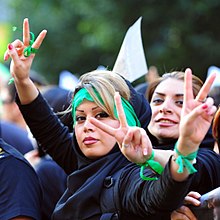
Iranian women during the Green Revolution, 2009
In the United States, the usage of the V sign as a photography gesture is known but not widely used. The original poster for the 2003 film What a Girl Wants showed star Amanda Bynes giving a V sign as an American girl visiting London. In the US, the poster was altered to instead show Bynes with both arms down, to avoid giving the perception that the film was criticizing the then-recently commenced Iraq War.[45]
Specific uses[edit]
- In Argentina, the V sign, besides “victory”, is linked to a political movement, Peronism.
- In South Africa, after the Nationalist Party won the 1948 election with fewer voters than the opposition, Vs appeared as graffiti representing the word “Volkswil” (will of the people) and thereby questioning the results.
- In Tamil Nadu,a state of India it refers to the political Party AIADMK
- University of Southern California, University of Virginia, The University of Texas Rio Grande Valley, and Villanova University students, alumni, and fans “throw their Vs up” by tradition and as a sign of pride in their university and its athletic teams. The V sign in this form frequently accompanies the motto “Fight on!” at USC.
- V sign, especially when printed in green, is a sign of the Iranian Green Movement.
- Following the first elections in Iraq after the U.S. invasion, a photo of a woman showing the V sign with one of her fingers dipped in purple ink became very well-known and was widely circulated. The ink is used to identify individuals who have already voted.
- In Poland, during the Solidarity movement, protesters showed the V sign meaning they would defeat Communism.[46] After partially free elections, when Tadeusz Mazowiecki was chosen as prime minister (August 24, 1989), he went to the MPs with the V sign, which was transmitted on TV.[47] It is sometimes shown during debates about the fall of Communism.
- In Romania, the sign represents victory and has been used as an extension of the Roman salute to announce that victory has been achieved. It was used heavily during the Romanian revolution after the ousting of Nicolae Ceaușescu. Mircea Dinescu is appearing in the first transmission of the Romanian Television after the revolutionaries occupied it shouting “We won!” and flashing the victory sign.
- During the Yugoslav Wars, Croatian and Bosnian troops and paramilitary militia used the sign as a greeting or an informal salute. U.S. and NATO peacekeepers stationed in Bosnia were forbidden to use the V-sign (peace symbol) to avoid upsetting or offending Serbs they might encounter.[48]
- In Vietnam, the V sign means “hello” since the Vietnamese word for the number “2” sounds like the English pronunciation of the greeting “hi”.
- Ringo Starr of the Beatles uses the V sign extensively while quoting the phrase “Peace and Love” as a sort of catchphrase.
- A vulgar gesture signifying cunnilingus is to put the V sign with the fingers on either side of the mouth (usually with the knuckles facing the observer) and to stick the tongue out. Most of the time the tongue is wriggled around.
- A partially obscured V sign can be added to someone else’s head to produce devil’s horns or “bunny ears” for an amusing photo. In September 2013, Manu Tuilagi apologised to Prime Minister David Cameron after making a “bunny ears” sign behind his head in a photo taken during a visit by the British and Irish Lions squad to Downing Street.[49]
- In Indonesia, candidate of the 2014 Indonesian presidential election, Joko Widodo use that sign for political campaign. The sign called “Salam Dua Jari”.[50]
- In Belgium, the New Flemish Alliance (N-VA) political party uses it as a rallying gesture. During the taking the oath of the actual Belgian federal government, three N-VA ministers used the V sign instead of the formal three-fingers sign.[51]
- In Turkey using the Victory sign can lead to a prosecution and conviction if it is shown because in Turkey the sign is associated with the PKK if used by Kurds.[52][53][54]
-
-
Singer Rihanna using the V sign, 2011.
-
-
References[edit]
Notes
- ^ “Victory Hand”. emojipedia.org Emojipedia.org.
- ^ Jump up to:a b V sign as an insult:
- ^ Eric Patridge, Tom Dalzell, Terry Victor. (2008.) The Concise New Partridge Dictionary of Slang and Unconventional English, Routledge, p. 683. ISBN 0-203-96211-7
- ^ “20th July 1941: ‘V for Victory’ widespread across Europe”. ww2today.com.
- ^ Zelinsky, Nathaniel (18 March 2011). “From Churchill to Libya: How the V symbol went viral”. Washington Post. Retrieved 14 December 2015.
- ^ Staff. American Manual Alphabet Chart Center for Disability Information & Referral (CeDIR), Indiana Institute on Disability and Community at Indiana University
- ^ Gary Martin. “Air quotes”. phrases.org.uk.
- ^ ““see” American Sign Language (ASL)”. lifeprint.com.
- ^ ““numbers” ASL American Sign Language”. lifeprint.com.
- ^ “The Unicode Standard, Version 8.0, range 2700–27BF” (PDF). unicode.org.
- ^ Tony Keim “Long tradition of flipping the bird”, Courier Mail, November 18, 2008, accessed April 14, 2011.
- ^ Staff Henry V, British Shakespeare Company.Accessed 23 April 2008
- ^ Defiance, contempt or derision:
- ^ “Up Yours Delors”. The Sun. Archived from the original on 2011-10-26. Retrieved 2011-10-31.
- ^ Wheeler, Brian (2005-06-24). “BBC NEWS | Politics | From two jags to two fingers”. Newswww.bbc.net.uk. Retrieved 2011-10-31.
- ^ “Finished: Furious Walter tells disgraced pair their Rangers days are over”. Daily Mail. London. 3 April 2009.
- ^ Barry Ferguson and Allan McGregor banned for life by Scotland, The Guardian, Friday 3 April 2009
- ^ “Gers strip Ferguson of captaincy”. BBC News. 1 January 2007. Retrieved 27 May 2010.
- ^ “Allen McGregor recalled to Scotland squad to face Sweden”. The Daily Mail. August 2, 2010. Retrieved 6 March 2016.
- ^ “Sweden 3-0 Scotland”. BBC. August 11, 2010. Retrieved 16 May 2011.
- ^ http://stvmcqueen.tripod.com/salute.jpg
- ^ Radar: Buffy the Vampire Slayer, Season 4 – TV Tropes
- ^ Still photograph of the gesture in the Season 5 opening credits of Buffy the Vampire Slayer
- ^ Staff On this Day 15 August 1971: ‘V-sign’ costs rider victory “BBC The infamous gesture won him an entry in the Chambers dictionary which defined ‘a Harvey Smith’ as ‘a V-sign with the palm inwards, signifying derision and contempt'”. Accessed 23 April 2008
- ^ Jump up to:a b Staff. The V sign, www.icons.org.uk. Accessed 23 April 2008
- ^ Webster Griffin Tarpley and Anton Chaitkin (2004). George Bush: The Unauthorized Biography, Progressive Press paperback edition (2004), p. 651(web link to Chapter -XXV- Thyroid Storm). Tarpley & Chaitkin cite the Washington Post, 3 January 1992.
- ^ David Wilton, Word Myths: Debunking Linguistic Urban Legends, Oxford University Press, 2008, ISBN 978-0-19-537557-2.
- ^ “Two fingers up to English history…”. The BS Historian. 2007-07-02. Retrieved 2017-05-21.
- ^ Wavrin, Jean de (1400?-1474?). A collection of the chronicles and ancient histories of Great Britain, now called England. 2. From A. D. 1399 to A. D. 1422 / by John de Wavrin, lord of Forestel ; transl. by William Hardy,… and Edward L. C. P. Hardy,… London: Longman. p. 203.
- ^ “Traditional English Draw”. www.primitivearcher.com. Retrieved 2017-05-21.
- ^ Jump up to:a b c Staff. The V sign, www.icons.org.uk web.archive.org
- ^ “Parkgate Iron and Steel Co., Rotherham (1901)”. YouTube. British Film Institute. Retrieved 13 November 2016.
- ^ Jump up to:a b The V-campaign, Virtual Radiomuseum
- ^ C. Sterling, 2003, Encyclopedia of Radio London: Taylor and Francis, page 359. at Google Books
- ^ “The V sign at BBC’s H2G2 website”. Bbc.co.uk. 1990-11-01. Retrieved 2011-10-31.
- ^ “Newswatch 1940s”. news.bbc.co.uk. Retrieved 27 May 2010.
- ^ “Churchill outside Downing Street”. Number-10.gov.uk. Archived from the original on December 2, 2007. Retrieved 2011-10-31.
- ^ “Churchill’s famous victory sign”. Number-10.gov.uk. Archived from the original on 2007-06-13. Retrieved 2011-10-31.
- ^ Staff. “The V Sign”. The British Postal Museum & Archive (BPMA). Archived from the original on 2012-04-06. Retrieved 2011-12-05.
- ^ James Jerman, Anthony Weir, Images of Lust: Sexual Carvings on Medieval Churches London: Routledge, 2013, page 145.
- ^ Kaczynski, Richard. Perdurabo: The Life of Aleister Crowley. North Atlantic Books, 2010, p. 511.
- ^ Jump up to:a b Staff. The Japanese Version (the Sign of Peace) ICONS. A portrait of England. Accessed 1 June 2008
- ^ “雑誌に載ったわたし。”. 日刊「きのこ」 skipのブログ.
- ^ 1971’s buzzwords[permanent dead link]
- ^ Ascher-Walsh, Rebecca (Apr 11, 2003). “Sign of the Times”. Entertainment Weekly. Retrieved February 27, 2014.
- ^ Francisco, Ronald (2010). Collective Action Theory and Empirical Evidence (1 ed.). Springer. p. 46. ISBN 978-1-4419-1475-0.
Subtle gestures, noise, and artwork are additional symbolic signs that dissidents use in coercive countries. Poland’s Solidarity’s signal was two fingers held up in the form of the letter V. This gesture diffused widely in Eastern Europe and now it is used in Palestine as a symbol of unity and nationalism.
- ^ “End to 45 years of Red rule”. New Straits Times. 1989-09-13. Retrieved 2012-01-29.
Tadeusz Mazowlecki, who nearly fainted during his opening speech, flashed a V-for-victory sign as deputies voted his Cabinet into office by 402–0 with 13 abstentions.
- ^ “A Soldier’s Guide: Bosnia-Herzegovina”. Dtic.mil. Archived from the original on 2012-02-25. Retrieved 2011-10-31.
- ^ “Manu Tuilagi forced to apologise for playing prank on Prime Minister David Cameron in No 10 visit”. Daily Telegraph. 17 September 2013. Retrieved 17 September 2013.
- ^ “Slank: Salam 2 Jari, Konser Kemanusiaan Terbesar”. Tempo. 7 July 2014. Retrieved 24 April 2019.
- ^ “Prestation de serment: trois N-VA font le ‘V’, signe de la victoire et de ralliement de leur parti (vidéo)”. RTL Newmedia.
- ^ SCF (2017-03-01). “Lawsuit against Leyla Zana demands prison sentence up to 21 years”. Stockholm Center for Freedom. Retrieved 2019-01-05.
- ^ “Turkey Condemned by ECtHR for Sentencing Işıkırık to Prison Over Victory Sign”. Bianet.
- ^ Tas, Latif (2016-04-22). Legal Pluralism in Action: Dispute Resolution and the Kurdish Peace Committee. Routledge. p. 60. ISBN 9781317106159.
Bibliography








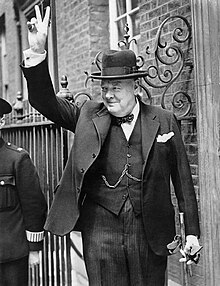


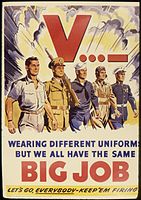
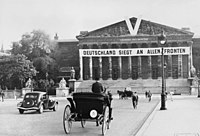
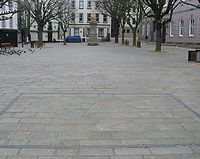




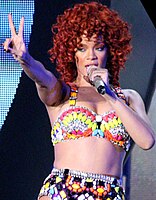
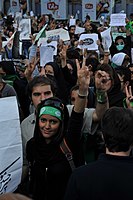

2 replies on “Simbol Dua Jari untuk Swear Sumpah”
Tidak setuju.
Kalau betuk bahwa orang Kristen Barat menggunakan nama Allah untuk sumpah, harusnya mereka mengacungkan 3 jari, untuk melambangkan Bapa, Putera, Roh Kudus.
Jadi bukan itu jawabannya.
terima kasih atas pendapatnya